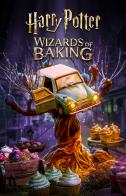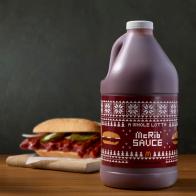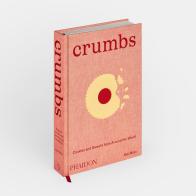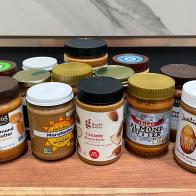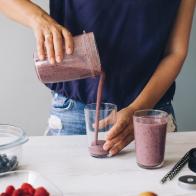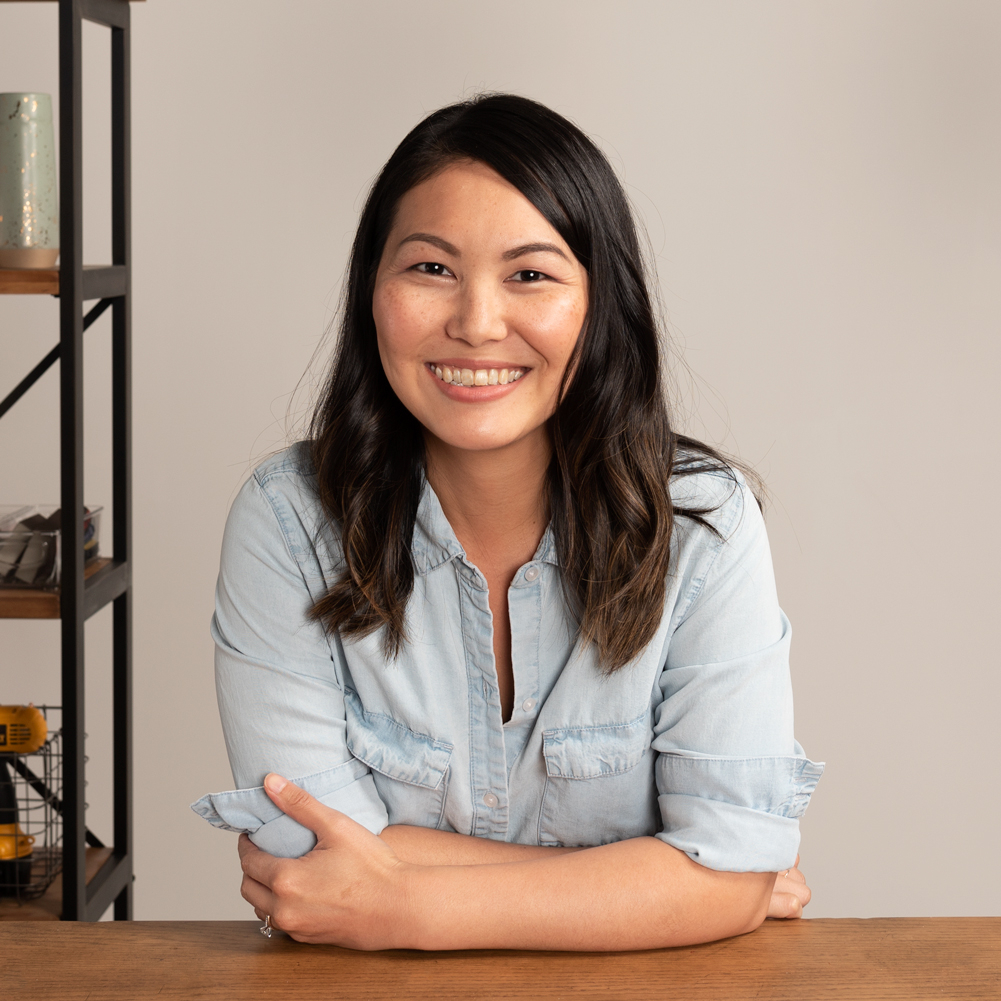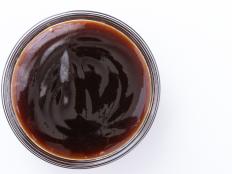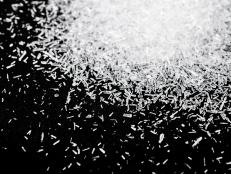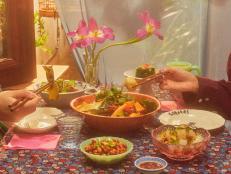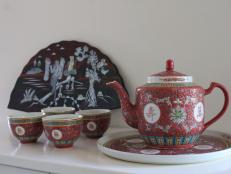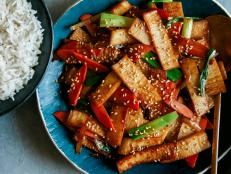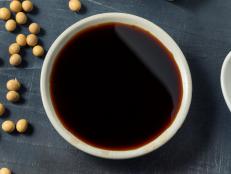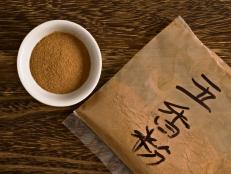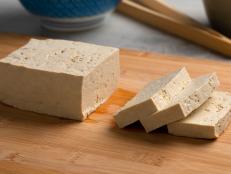The Jewel-Like Mooncakes That Gleam in Sunlight
Traditional mooncakes are labor intensive. But jelly mooncakes, a modern take on the Mid-Autumn Festival treat, require only a fraction of the work.

Matt Armendariz
Get the Recipe: Longan and Osmanthus Jelly Mooncakes
Making traditional mooncakes from scratch is an intricate, tedious task. It calls for mixing and kneading dough to achieve the pastry’s signature delicate, flaky crust. The filling, typically a rich, sweet paste made from lotus seeds or red beans, requires hours of soaking and cooking. Shaping the mooncakes involves pressing the dough through an ornate mold one at a time. This elaborate process, while rewarding, can be daunting for home cooks who may lack the time or tools needed to achieve the perfect mooncake.
In recent years, a modern twist on this beloved Mid-Autumn Festival treat has been gaining popularity: jelly mooncakes. These vibrant, translucent desserts offer a refreshing and accessible alternative to their baked counterparts. “Traditionally, mooncakes have a pastry crust and you would not be able to see the filling until you cut into the mooncake. With jelly mooncakes, all the layers are visible from the outside and I think they are the most beautiful when the sun shines through them,” says Amy Ho of Constellation Inspiration. Ho, who grew up making jelly desserts with her family, decided to give jelly mooncakes a try after spotting molds on a recent trip to Hong Kong.
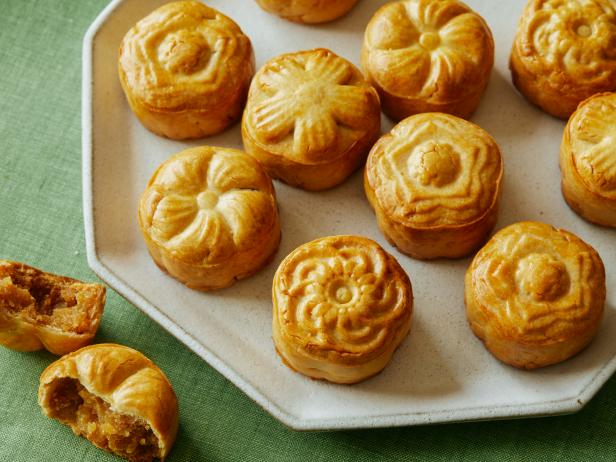
Teri Lyn Fisher
Get the Recipe: Mooncakes
Unlike labor-intensive traditional mooncakes, jelly mooncakes are relatively simple to recreate at home, requiring minimal equipment and a straightforward recipe. Made with agar-agar or gelatin, these mooncakes are set in silicone molds, allowing for a wide array of flavors and colors. Their translucent beauty and light, refreshing taste make them a hit among both experienced bakers and novices looking to celebrate the Mid-Autumn Moon Festival in a fun, contemporary way.
In his take on the bouncy mooncake, Food Network Kitchen recipe developer Andy Liang pays homage to traditional Chinese flavors by incorporating classic ingredients he grew up with. The recipe features longan, a tropical fruit, and dried osmanthus, a delicate aromatic flower often used to make herbal tea. “Longan is one of those fruits my mom would always buy in Chinatown and Flushing. It’s subtle with a vegetal flavor.” Liang uses canned longan instead of fresh (which also makes this an easy pantry recipe to pull together for last-minute dessert needs) and sweetens the jelly mixture with the included syrup. Dried goji berries add a hint of cranberry-like tang and chew.
While these ingredients can be swapped for others — for example, lychee in place of longan, green tea instead of osmanthus — Liang says it’s important to use both of the setting agents. “I went through multiple tests of this recipe. I tried to keep it vegan with agar agar as my setting agent as opposed to using gelatin, which may have pork or beef. That way anyone can have it,” he explains. “The secret ingredient is konnyaku powder, which is derived from a tuber. It’s also called konjac. If you do a side-by-side test of agar agar with and without the konnyaku powder, it’s a world of difference. The konnyaku powder adds the chewy aspect of it, while the agar just sets it pretty firm.”
The prep is as easy as it gets: rehydrate the goji berries, cut up the longan and heat up the jelly mixture. “Make sure to bring the mixture to a boil to activate the agar agar,” advises Liang, and to skim off any foam on top for the prettiest, clearest mooncakes.”
Patience is also key, says Ho. “If you are making multi-layered or multi-flavored mooncakes, make sure each layer has enough time to set before adding the next layer. Always allow enough time for the mooncakes to firm up in the fridge before you unmold them, too.”
Liang’s version requires an hour to set in the fridge, then they’re ready to eat. While some desserts are even better with a dollop of whipped cream or a scoop of ice cream, these jelly mooncakes are best enjoyed as is. “It’s perfectly sweet enough,” says Liang. “You don’t need anything else.”
Related Content:





